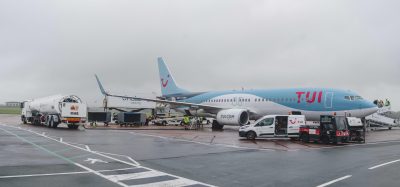Aviation and Alternative Fuels
- Like
- Digg
- Del
- Tumblr
- VKontakte
- Buffer
- Love This
- Odnoklassniki
- Meneame
- Blogger
- Amazon
- Yahoo Mail
- Gmail
- AOL
- Newsvine
- HackerNews
- Evernote
- MySpace
- Mail.ru
- Viadeo
- Line
- Comments
- Yummly
- SMS
- Viber
- Telegram
- Subscribe
- Skype
- Facebook Messenger
- Kakao
- LiveJournal
- Yammer
- Edgar
- Fintel
- Mix
- Instapaper
- Copy Link
Posted: 26 May 2009 | ICAO Secretariat | No comments yet
In the autumn of 2009, ICAO will hold a world conference on the subject of aviation and alternative fuels. The main objective will be to develop an internationally-agreed roadmap for facilitating the use of aviation alternative fuels. This article provides a snapshot of progress to date as well as main issues that will need to be addressed in formulating a global roadmap.
In the autumn of 2009, ICAO will hold a world conference on the subject of aviation and alternative fuels. The main objective will be to develop an internationally-agreed roadmap for facilitating the use of aviation alternative fuels. This article provides a snapshot of progress to date as well as main issues that will need to be addressed in formulating a global roadmap.
Aviation is a relatively small contributor to worldwide greenhouse gas emissions, yet the anticipated growth of the industry in the coming decades makes action to reduce the use of fossil fuels essential. A variety of approaches, including alternative fuels and the specific challenges they pose, have to be seriously considered.
This direction was endorsed by 36th Session of the ICAO Assembly in September 2007, as it recognised the urgent need for more concerted and effective action to reduce the carbon footprint of international aviation, the importance of research and development in fuel efficiency and alternative fuels, and the value of promoting understanding on the subject.
The genesis of alternative fuels for commercial aviation is interesting. Though often referred to as “innovative”, the practicalities and efficiencies of alternative fuels have actually been explored for many decades now. Indeed, at the end of World War II, approximately 85 percent of the German military machine was being powered by a synthetic fuel produced from hydrogenated coal by employing a “Fischer-Tropsch” process. The need for a dependable fuel supply along with limited access to secure crude reserves were driving forces behind Germany’s significant war-time search for alternative fuels.
Decades later, rising fuel costs and energy supply security issues rekindled interest in alternative fuels. Several States and regions felt it prudent to explore a possible shift to alternative fuels. Major initiatives and consortia grew out of such intentions. More recently, there has been a growing realisation about the potential of alternative fuels in the development of balanced and robust strategies to mitigate the impact of aviation on the environment.
Alternative fuels on their own are not the solution to reducing aviation emissions. They are part of a comprehensive energy strategy. There are very few low-carbon energy options for reducing aviation emissions, and alternative fuels may be the only option for large scale use. Nevertheless, the decision to develop and use alternative fuels must be an informed and responsible one, taking into account total life-cycle costs and carbon footprints.
The current financial and economic crisis unfolding around the globe should not be seen as an obstacle to this way forward, but rather as an opportunity. Alternative fuels can play a decisive role in diversifying the global and national energy mixes, and it may help reduce price volatility in energy markets.
As is so often the case in international undertakings, global cooperation will be essential to ensuring the consistent and standardised procedures for the use of alternative fuels. At the moment, the international aviation community is looking into an integrated approach to alternative fuels. While regional and national consortia have done an excellent job of bringing together the expertise to consider technical issues, the subject has been addressed in a fragmented way.
There is a critical need for more global coordination and ICAO is the recognised forum for that to happen. The Organisation is as committed as ever to exercising its leadership for achieving effective coordination among all aviation stakeholders, be they States, industry or specialised agencies. It has in fact incorporated alternative fuels into the considerations of the Council’s Committee on Environmental Protection, CAEP, at the request of the Council of ICAO and the Group on International Aviation and Climate Change created by the Assembly in 2007.
Over the years, ICAO has maintained excellent relations with such bodies as the Intergovernmental Panel on Climate Change, the IPCC, and of course the United Nations Framework Convention on Climate Change – the UNFCCC. In the case of Alternative Fuels, we aim to also form a close partnership with the International Energy Agency and the newly formed International Renewable Energy Agency.
One of the main concerns with air transport remains the fact that, despite much effort, the aggregate emissions gains accruing from global traffic growth are outpacing the incremental efficiency gains being delivered. In other words, though aircraft are more efficient there are simply more flights every year in the service of societies and economies. This has led to overall emissions growth rates, making it clear that the sector will need to use all possible options on its way to addressing these challenges.
Initial reactions to proposals to operate aircraft with alternative fuel often involve fears that massive change will be required in the manner and methods by which aviation operations are currently accomplished. Concerns are raised about the need to develop new engines and aircraft, new airport infrastructure, new fuel pipelines, etc., and of course many envisage that this type of significant change to a global system would require decades to achieve effective implementation.
What is being proposed with the aviation alternative fuels concept is simply to change the current fuel for an equivalent one. A “drop in” fuel solution, in other words. As the fuel specifications are generally almost identical, users can also blend some fuel alternatives with aviation kerosene in proportions of 10, 15 and even up to 50 percent or use the alternative as a complete substitute. Blending and substitution solutions will ultimately depend on availability.
In other words, whichever fuel is being proposed it will be submitted to the same certification criteria and will have to perform as do current aviation jet fuels (fossil fuels), thereby rendering them completely interchangeable. In fact, most of the technology needed is known today and it is really just a matter of political will, with the necessary prioritisation of efforts and resources on key steps that are needed to turn these suggestions into a reality. Intensifying resources for alternative fuel certification is currently of paramount importance. Furthermore, aviation’s well-defined global fuel distribution network facilitates the possibility of it being the first sector to employ alternative fuels on a worldwide scale.
It should be emphasised that aviation is not pursuing alternative fuel solutions whereby a single new substitute for aviation kerosene is being sought. What is now being envisaged is to optimise available sources of energy for aviation around the globe, building upon local and regional capabilities and the fundamental need for sustainability and energy security. On biofuels, aviation is looking into a catalogue of oils instead of a single fuel choice, with different manufacturing plants, different processes and different regional solutions being proposed as the key to global success.
The most promising prospects today are second/third generation biofuels now being produced from jatropha, camelina and algae, for example. Underlying expectations are that alternative fuel life-cycles (planting, harvesting, production and use) produce lower GHG emissions than fossil fuels. One could ultimately foresee a fuel life-cycle resulting in zero percent emissions due to the exhaust gases produced by an aircraft being fully absorbed by the feedstock.
The world conference later this year will be a timely and strategic meeting for determining the future evolution of alternative fuels for aviation. At this stage it is envisaged that the conference will address:
- Coordination mechanisms among the major international specification groups on new fuel specification
- Methodologies for calculating life-cycle (well-to-wake) carbon footprints
- Assessment of the technology readiness level of aviation fuels
- A standardised vocabulary and definition of terms used in alternative fuels
- Airport/Airline/Distributor/Fuel Supplier costs and benefits
- The possibilities for alignment of several broad feedstock-centric research roadmaps and programmes to ensure bio-fuel supply development is coordinated between aviation, agriculture and renewable fuel interests
- Various national and government-backed infrastructure investments in synthetic and bio-fuel pilot plants and possibly full-scale production facilities.

















